Things to do in Amman
The hilly capital of Amman is filled with excellent sightseeing opportunities and activities for all kinds of travellers. One popular route is the Desert Castle Loop, which stretches mostly east and southeast of the city. This route features a series of historic Umayyad desert castles, such as Qasr Al-Kharrana, Qasr Amra, and Qasr Al-Azraq. It makes for a fascinating day trip through Jordan's arid landscapes, with opportunities to explore unique architecture and centuries-old history, perfect for families and history enthusiasts alike.
Within the city itself, there's no shortage of things to do. A tour of the spectacular Roman Amphitheatre in downtown Amman is a must, offering a glimpse into the city's ancient past. Just a short walk away is Citadel Hill, or Jabal al-Qal'a, where visitors can climb up to enjoy panoramic views of Amman's sprawling hills and neighbourhoods. For a more relaxed experience, sitting at one of the city's many bustling street cafés offers an ideal way to soak in the atmosphere. Whether chatting with locals or simply observing daily life, visitors are encouraged to take some time to enjoy the city's vibrant street culture.
Not far from the capital, travellers can enjoy a variety of rewarding day trips. Highlights include Jerash, one of the best-preserved Roman cities in the world, Madaba, famous for its Byzantine mosaics, and Mount Nebo, a biblical site believed to be where Moses viewed the Promised Land. Each destination has its own unique charm and cultural importance, and all are easily reachable within an hour or two by car.
A visit to the Dead Sea is also a must when in Jordan. Just a short drive from Amman, the road descends through the olive-covered northern hills into the dramatic Jordan Rift Valley, eventually reaching the shores of the Dead Sea, the lowest point on earth's surface. Floating in its salty waters and witnessing the stark beauty of the surrounding desert makes for an unforgettable experience.
Amman offers an ideal mix of historic depth, modern charm, and easy access to many of Jordan's most iconic sites, making it an excellent base for exploration.
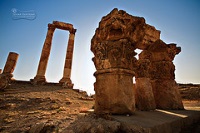
Citadel Hill
Perched atop Jabal al-Qal'a, the Amman Citadel offers sweeping views of the city and contains ruins from several ancient civilisations, including Roman, Byzantine, and early Islami…
Citadel Hill
Perched atop Jabal al-Qal'a, the Amman Citadel offers sweeping views of the city and contains ruins from several ancient civilisations, including Roman, Byzantine, and early Islamic periods. Notable structures include the Umayyad Palace, a small Byzantine church, and the Temple of Hercules. While a small archaeological museum remains on site, most major artefacts, including the Dead Sea Scrolls, Iron Age sarcophagi, and a replica of the Mesha Stele, are now housed in the Jordan Museum in downtown Amman. The Citadel is a must-visit for those interested in Jordan's rich and layered history.
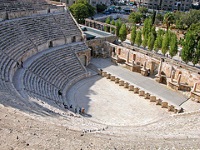
Roman Theatre
Below the Citadel lies the impressive Roman Theatre of Amman, which is carved into the hillside and able to seat up to 6,000 people. Built during the reign of Emperor Antoninus Piu…
Roman Theatre
Below the Citadel lies the impressive Roman Theatre of Amman, which is carved into the hillside and able to seat up to 6,000 people. Built during the reign of Emperor Antoninus Pius between 138 and 161 CE, it remains a well-known landmark and is still occasionally used for concerts and cultural events. Flanking the theatre's stage are two small museums: the Jordan Folklore Museum, which displays traditional rural and urban life artifacts, and the Museum of Popular Traditions, featuring regional costumes and mosaics from 4th to 6th century Jordanian churches. The theatre sits adjacent to the Hashemite Plaza, the Odeon Theatre, and the nearby Nymphaeum fountain.
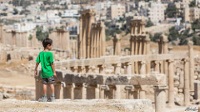
Jerash
Situated about 31 miles (50 km) north of Amman is one of Jordan's top attractions: the ancient city of Jerash. Often regarded as one of the best-preserved Roman provincial cities i…
Jerash
Situated about 31 miles (50 km) north of Amman is one of Jordan's top attractions: the ancient city of Jerash. Often regarded as one of the best-preserved Roman provincial cities in the world, Jerash owes its exceptional state to centuries of abandonment, limited urban development, and gradual burial under earth and debris. Its magnificent baths, theatres, temples, arches, colonnaded streets, and stone-rutted roads have long attracted scholars and tourists alike to admire one of the most complete cities of the Roman Decapolis. Archaeological discoveries indicate human activity in the area since the Neolithic Age, though the city itself flourished during the Greco-Roman period. Today, visitors can marvel as the ancient amphitheatre comes to life during the annual Jerash Festival of Culture and Arts, where artists from around the globe sing, dance, act, and perform in a celebration of Jordanian and international culture.
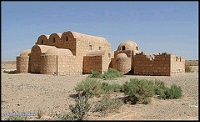
Desert Castle Loop
Stretching east of Amman toward Saudi Arabia and Iraq lies a vast desert plain dotted with historic castles, forts, baths, and palaces known as the Desert Castles. Built mostly dur…
Desert Castle Loop
Stretching east of Amman toward Saudi Arabia and Iraq lies a vast desert plain dotted with historic castles, forts, baths, and palaces known as the Desert Castles. Built mostly during the Umayyad period (7th to 8th centuries AD), these sites served varied purposes including retreats, military outposts and caravan stops. Qasr Mushatta is the largest and most elaborate, though never completed, with its façade now in Berlin's Pergamon Museum. The best-preserved is Qusayr Amra, a UNESCO World Heritage Site famed for its domed bathhouse and colourful frescoes. Other notable sites include Qasr al-Azraq, once Lawrence of Arabia's base, Qasr al-Kharana, and the partially restored Qasr al-Hallabat.
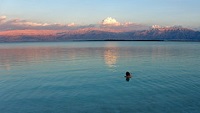
The Dead Sea
Situated about 28 miles (45 km) southwest of Amman lies the famous Dead Sea, the lowest point on Earth at around 1,410 feet (430m) below sea level. With a salt concentration nearly…
The Dead Sea
Situated about 28 miles (45 km) southwest of Amman lies the famous Dead Sea, the lowest point on Earth at around 1,410 feet (430m) below sea level. With a salt concentration nearly ten times that of the ocean, it's devoid of fish or plants, though microscopic organisms thrive. Its mineral-rich waters and black mud have made it an internationally renowned destination since ancient times, prized for their healing properties and the unique experience of floating effortlessly. Most visitors head to the northern shore resort area of Sweimeh, where they can enjoy beaches, restaurants, showers and spa treatments. Accommodation, including medical therapies, is available at the Dead Sea Spa Hotel and other nearby resorts.
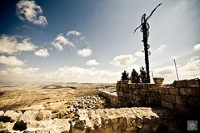
Mount Nebo
Mount Nebo is one of Jordan's most sacred sites, traditionally believed to be the place where Moses viewed the Promised Land before he died, though his exact burial site remains un…
Mount Nebo
Mount Nebo is one of Jordan's most sacred sites, traditionally believed to be the place where Moses viewed the Promised Land before he died, though his exact burial site remains unknown. Located on the edge of a plateau about six miles (10km) from Madaba, Mount Nebo offers breath-taking views across the Jordan Valley and the Dead Sea, with Jerusalem sometimes visible on a clear day. A modern shrine, built over the remains of a 6th-century Byzantine monastery, protects the site's original floor mosaics. In the surrounding grounds stands the symbolic Serpentine Cross, representing both Moses' bronze serpent and the crucifixion of Christ.
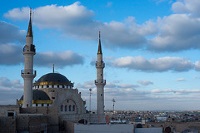
Madaba
Madaba is most famous for its spectacular Byzantine and early Islamic-era mosaics from the 5th to 8th centuries, found throughout the town's churches and historic buildings. Locate…
Madaba
Madaba is most famous for its spectacular Byzantine and early Islamic-era mosaics from the 5th to 8th centuries, found throughout the town's churches and historic buildings. Located just 19 miles (30 km) south of Amman, it's home to the renowned 6th-century Madaba Map, a detailed mosaic depicting Jerusalem and the Holy Land. One of the town's most beautiful mosaics decorates the floor of the Church of the Apostles, while the Archaeological Park features a rich collection of mosaics viewed from above via elevated ramps. The Greek Orthodox Church of St George houses the Madaba Map, the earliest surviving original map of the Holy Land, laid around 560 AD.



